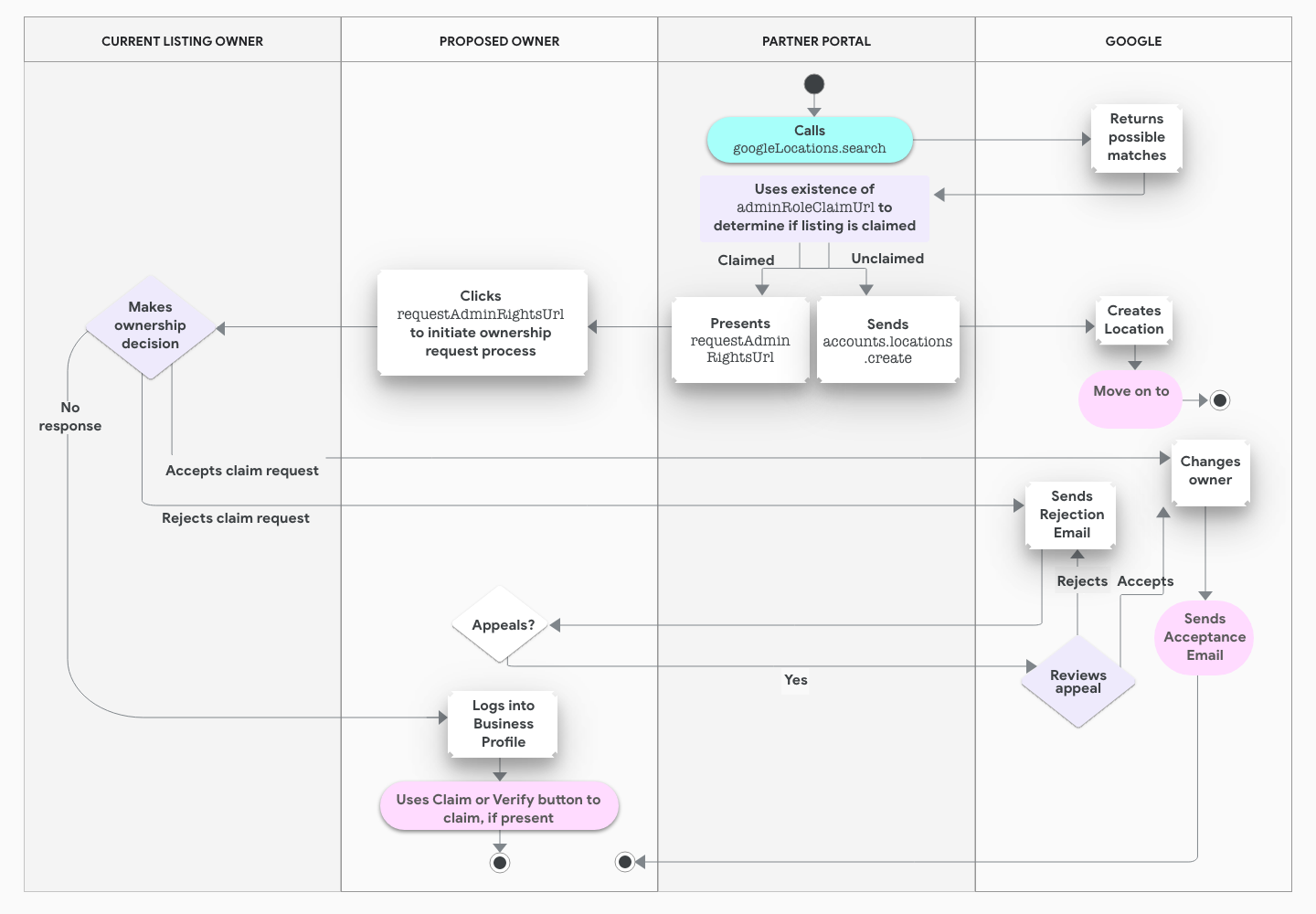באמצעות GoogleLocations API תוכלו לראות מראש אם הוגשה תלונה על מיקום מסוים בפרופיל העסק. כך, אם מישהו יטען בעלות על המיקום, תוכלו לבקש גישה למיקום באופן מיידי. בנוסף, אם אתם מנהלים חשבונות שאומתו בכמות גדולה, תוכלו לבחור מראש התאמות פוטנציאליות בצורה מדויקת יותר ולהימנע מהוספה של מיקומים כפולים.
נקודת הקצה של ה-API מחזירה כתובת URL שמציינת אם כבר הוגשה תלונה לגבי מיקום מסוים. אם כבר הוגשה תלונה על הפרת זכויות יוצרים, תוכלו להשתמש באותה כתובת URL כדי להתחיל את תהליך בקשת הגישה.
בתמונה הבאה מוצגת סקירה כללית של התהליך לקבלת בעלות על מיקום.

כדי להשתמש ב-API של GoogleLocations, צריך לבצע את השלבים הבאים:
- איסוף נתוני מיקום מהמוכר.
-
קוראים לנקודת הקצה
googleLocations.search. מציינים את נתוני המיקום בגוף הקריאה. לחלופין, אפשר לספק אותו במחרוזת שאילתה, בדומה למה שמשתמש מזין בחיפוש או במפות. לדוגמה, "Starbucks 5th ave NYC".ה-API מחזיר רשימה של מיקומים שעלולים להתאים ומידע על כל מיקום, כמו
locationNameוכתובת. - בוחרים את המיקום שתואם למיקום שלכם. אם לא נמצאו התאמות, מקישים על
accounts.locations.createומדלגים לשלב 5. -
בהתאם למצב של
requestAdminRightsUrlבתשובה, מבצעים את הפעולות הבאות:- אם הערך של
requestAdminRightsUrlקיים, הנכס בבעלות של משתמש אחר. מפנים את המוכר לכתובת ה-URL כדי להתחיל לבקש גישה לבעלות על המיקום הקיים בפרופיל העסק. - אם השדה
requestAdminRightsUrlלא קיים, צריך להפעיל את הפונקציהaccounts.locations.createוליצור דף עסק חדש שיאומת מאוחר יותר.
- אם הערך של
- אם יצרתם כחלק מהתהליך הזה כרטיסי מוצר חדשים, תוכלו להשתמש בממשקי ה-API לאימות כדי להתחיל את תהליך האימות של כרטיסי המוצר. מידע נוסף זמין במאמר ניהול האימות.
